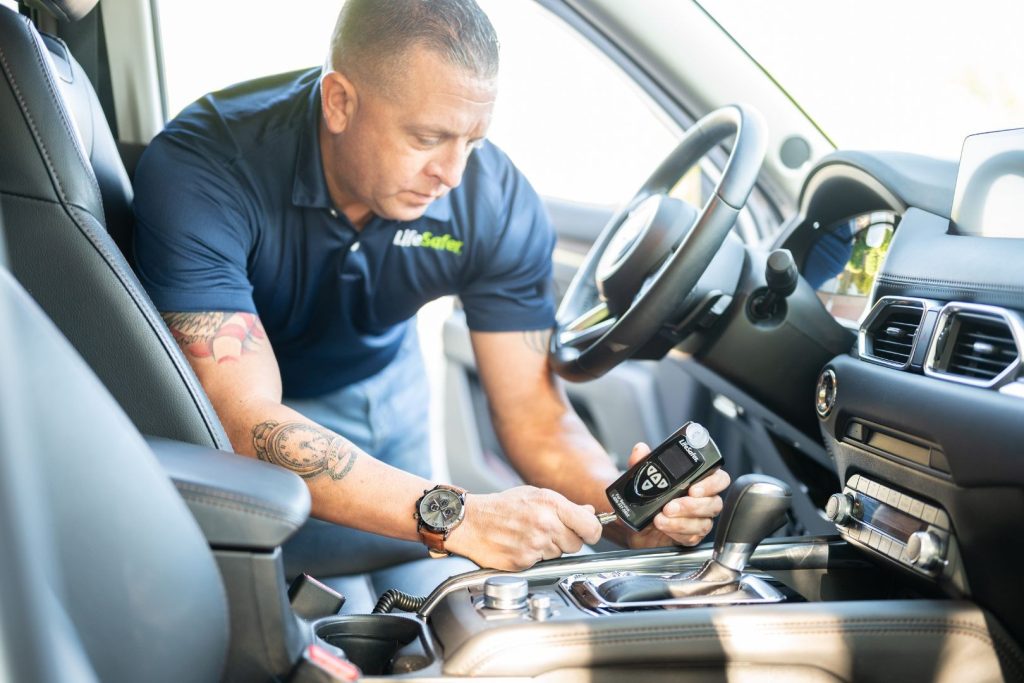Preventing drunk driving has long been a priority in automotive safety, law enforcement, and public health. One technology leading this charge is the Ignition Interlock Device (IID). Designed to keep impaired drivers off the road, IIDs serve as an innovative solution to enhance road safety and reduce alcohol-related accidents. But while today’s IIDs are effective, tomorrow’s advancements promise to revolutionize how we prevent drunk driving.

How Do Current Ignition Interlock Devices Work?
Ignition interlock devices operate as a breathalyzer for vehicles. Installed in a car’s ignition system, an IID requires drivers to submit a breath sample before starting the engine. If the device detects a Breath Alcohol Concentration (BAC) over the pre-set limit, the car won’t start.
Here’s how the standard process works:
- Breath Sample Submission: Drivers blow into the device to test their alcohol levels.
- Real-Time Analysis: The IID measures the alcohol concentration in the breath.
- Pass/Fail Outcome:
- Pass: The car starts as usual.
- Fail: The engine remains locked, and a record is generated for authorities.
Additional features include rolling retests, which randomly prompt the driver to submit breath samples while driving, ensuring ongoing compliance. Tampering with or failing the device is reported to the authorities, leading to penalties or extended IID requirements.
While useful, current devices have room for improvement in terms of accuracy, integration, and user experience. That’s where innovation steps in.
Technological Advancements in Ignition Interlock Devices
New advancements are shaping the next generation of IIDs, making them smaller, smarter, and more effective.
Enhanced Sensor Technology
Traditional IIDs use fuel cell sensors to detect alcohol, but newer methods promise increased accuracy.
- Infrared Spectroscopy: A method used in high-end breathalyzers to measure alcohol molecules more precisely, reducing false positives.
- Nanosensors: Tiny sensors capable of detecting even the faintest traces of alcohol quickly and accurately.
These innovations aim to make IIDs more reliable while minimizing errors that undermine user trust.
AI-Powered Driver Monitoring
Artificial intelligence (AI) is transforming IIDs by offering real-time driver monitoring. AI systems can analyze driving patterns to detect impaired behavior, even if alcohol is not present. For instance, sudden erratic movements may trigger alerts and interventions. This approach offers an added layer of safety.
Biometric Authentication
Biometric authentication, such as facial or fingerprint recognition, can prevent unauthorized individuals from operating a vehicle. By ensuring the right person provides the breath sample, this feature eliminates attempts to cheat the device.
Integration with Vehicle Systems
Modern vehicles are becoming interconnected ecosystems, and IIDs are following suit by integrating seamlessly into these systems.
Real-Time Data Collection
Future IIDs will collect and transmit real-time data to authorized entities, such as law enforcement or monitoring agencies. This data includes:
- BAC levels
- Vehicle start attempts
- Driving behavior
This information can raise red flags for potential compliance issues and enable authorities to take immediate action if needed.
Remote Monitoring
Drivers may soon receive notifications directly on their smartphones if issues arise, such as tampering or device malfunctions. This ensures users stay informed and proactive about their IID compliance.
Integration with Infotainment Systems
Imagine performing a breath test through a vehicle’s voice assistant or touchscreen dashboard. This user-friendly integration simplifies the process and reduces the intrusive nature of older IID designs.
LifeSafer® and the Future of IID Technology
When it comes to leading the way in IID innovation, LifeSafer® is a name that stands out. With the smallest, easiest-to-use IID on the market, LifeSafer combines cutting-edge technology with user-focused design.
Key features of the LifeSafer L250 device include:
- Discreet Size: Compact and inconspicuous, making it ideal for everyday use.
- User-Friendly Design: Simplified blow patterns ensure easy compliance.
- Accurate Readings: Advanced sensors minimize false positives.
LifeSafer is constantly pushing the boundaries of IID technology, offering solutions that prioritize safety, compliance, and user satisfaction simultaneously.
Building Safer Roads, One Device at a Time
The future of ignition interlock devices is incredibly promising. Innovations in accuracy, integration, and personalization are set to make these devices indispensable tools for enhancing road safety. From AI-powered monitoring to seamless vehicle integration, IIDs are evolving to meet the challenges of modern transportation.
With advancements led by companies like LifeSafer, drivers can look forward to a future where IIDs are more accessible, efficient, and user-friendly. By adopting these technologies, we can collectively reduce drunk driving incidents, save lives, and foster a culture of responsible driving.